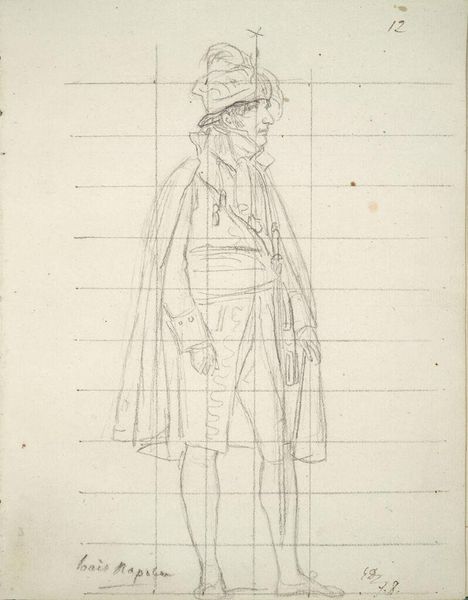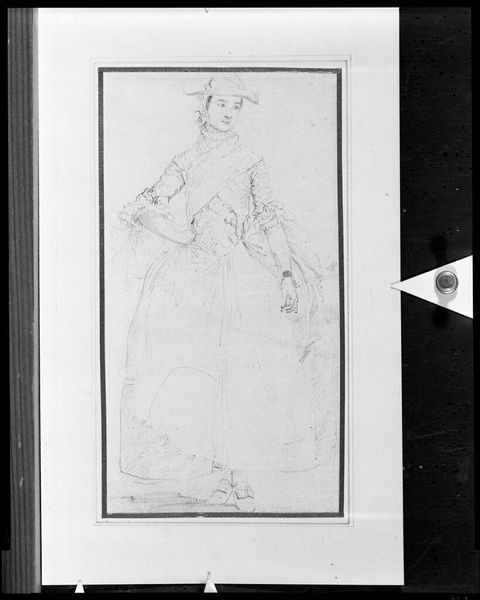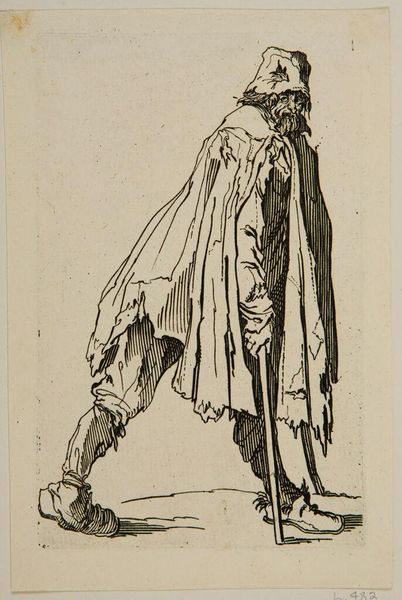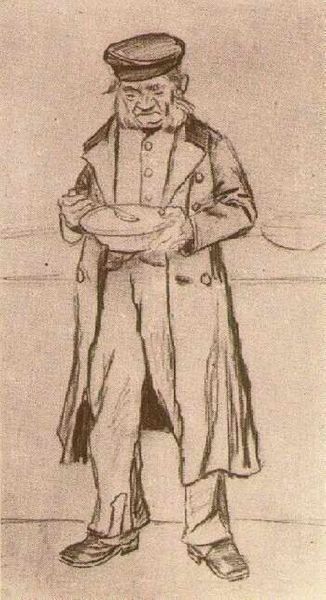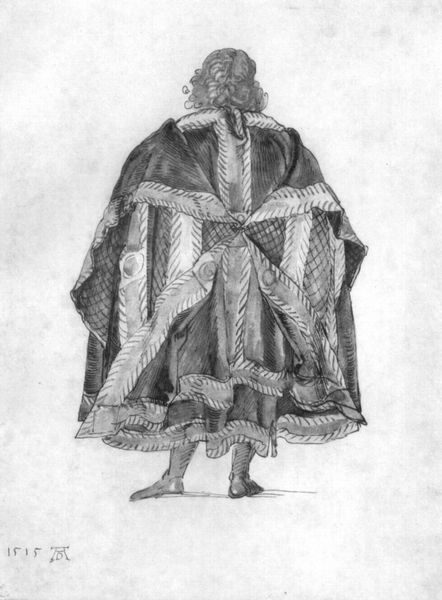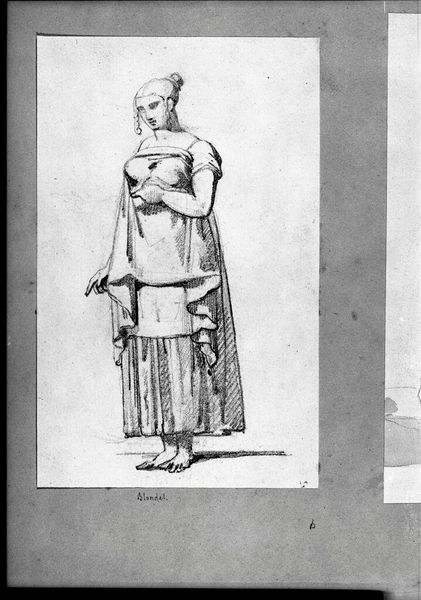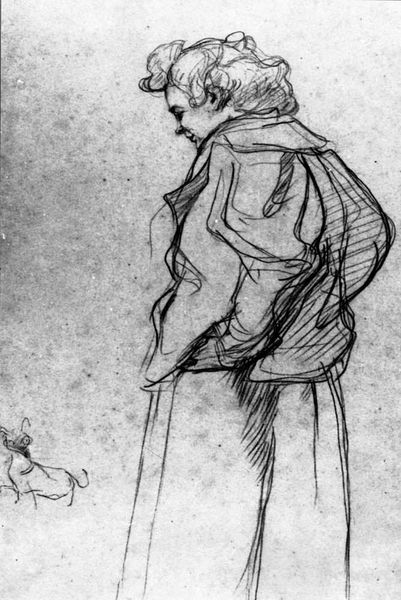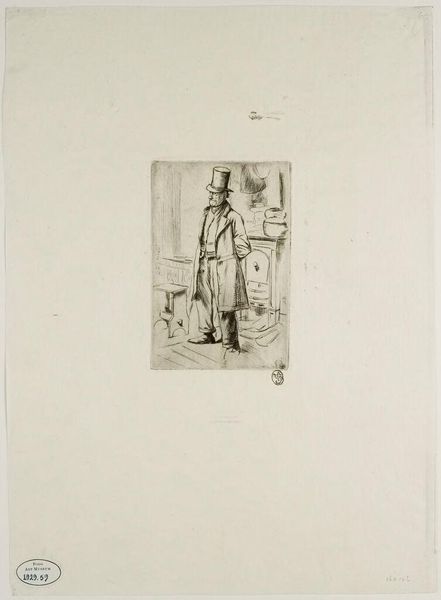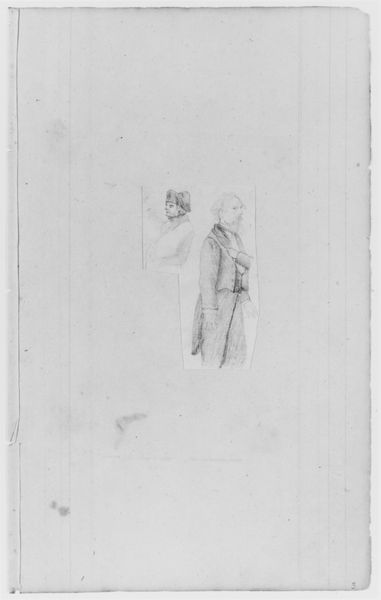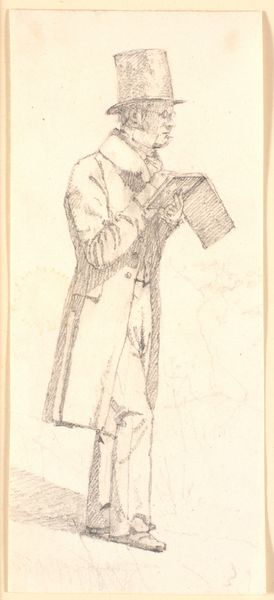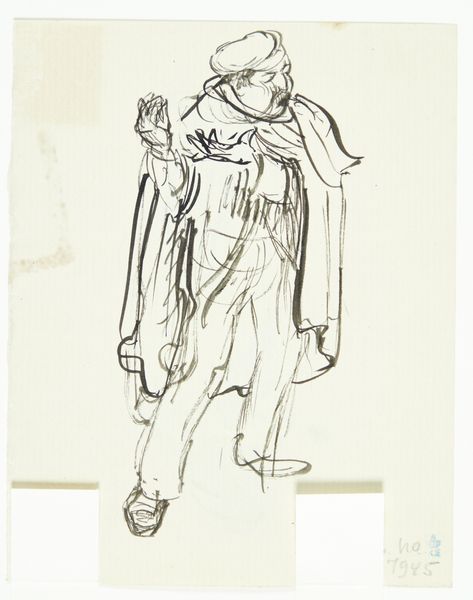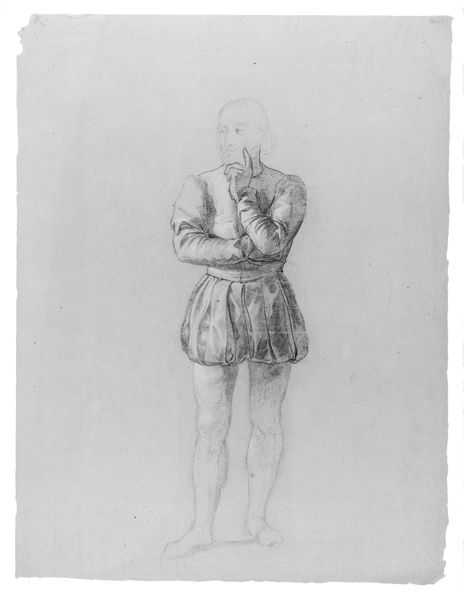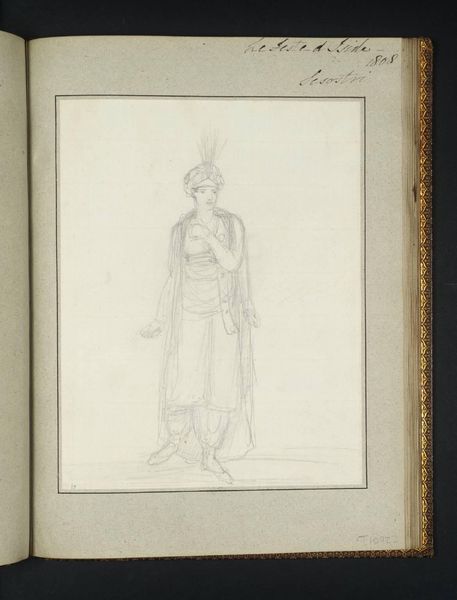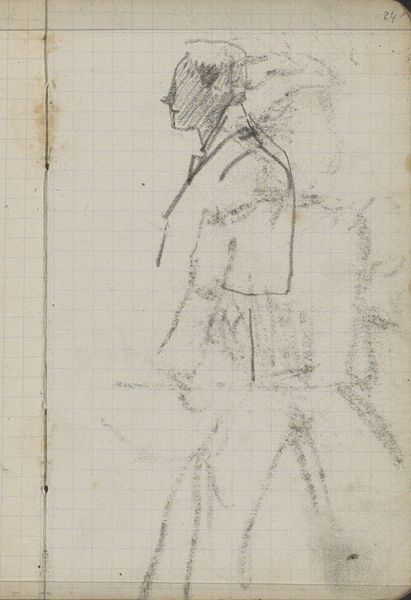
Study for Full-length Male Statue (from Sketchbook) 1857 - 1860
0:00
0:00
drawing, pencil
#
portrait
#
drawing
#
pencil sketch
#
pencil
#
history-painting
#
academic-art
Dimensions: 8 1/8 × 5 1/4 in. (20.6 × 13.3 cm)
Copyright: Public Domain
This is John Quincy Adams Ward’s sketch of a full-length male statue. The figure is draped, exuding a sense of classical heroism. The cloak, casually slung over his shoulder, echoes ancient Roman statuary, a symbol of authority and civic virtue. We find similar draping in depictions of emperors and orators across time. Consider the statue of Augustus of Prima Porta, where the cloak similarly signifies leadership and divine favor. Yet, here, the cape is worn with a modern nonchalance. This is a psychological dance between epochs. The gesture—perhaps a hand resting on the hip—hints at contrapposto, the classical stance of balanced asymmetry. In Renaissance art, this was revived to convey naturalism and vitality, as seen in Donatello’s David. This pose communicates a quiet confidence, a readiness for action. The statue, through its gestures and drapery, evokes a sense of timeless dignity. The symbols are not linear, but cyclical, resurfacing and evolving in different contexts.
Comments
No comments
Be the first to comment and join the conversation on the ultimate creative platform.
